
Welcome to CivilGEO Knowledge Base
Welcome to CivilGEO Knowledge Base

Welcome to CivilGEO Knowledge Base
Welcome to CivilGEO Knowledge Base
The Buffer Polylines command of CivilGEO’s software allows the user to create new polygons around the selected polylines using a specified buffer distance.
Note that the user can also create a buffer around selected polygons using the Buffer Polygons command. To learn more about this command, refer to this article in our knowledge base.
Buffered features are stored in user-specified target layers, which must contain either line or polygon features. For instance, the user might use buffers to show an ecological zone around a waterway or the area around a contaminated well. More than one feature can be buffered at once, but a separate buffer will be created around each feature.
Follow the steps below to use the Buffer Polylines command:
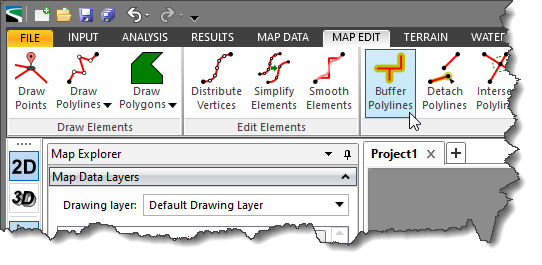
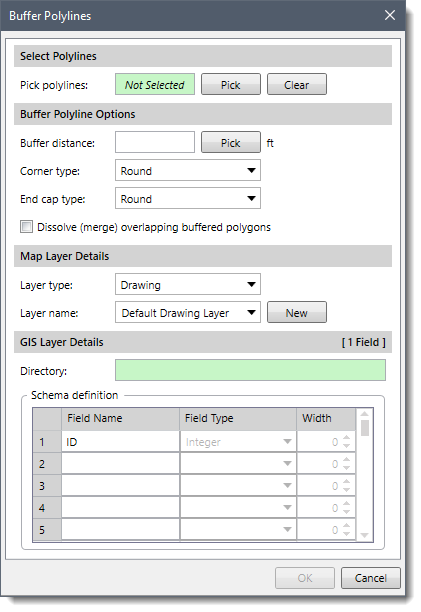
The following sections describe the Buffer Polylines command and how to interact with the above dialog box.
The Select Polylines section allows the user to select polylines to buffer from the Map View. The user can click the [Pick] button to select polylines from the Map View.
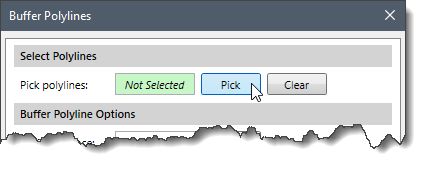
After selecting the polylines, the number of selected polylines will be displayed in the Pick polylines read-only field. Note that if polylines were pre-selected prior to running this command, then the Pick polylines read-only field will display the number of selected polylines.
The user can click the [Clear] button to cancel any previous selection and redo the entire process.
This section allows the user to specify the buffer distance, corner type and shape of the buffer at the end of the polylines.
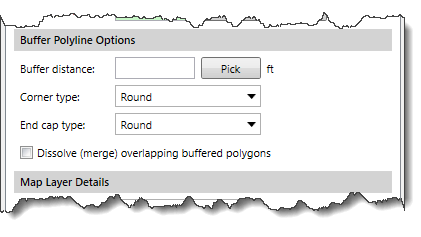
The following entries are provided in this section:
This section allows the user to create a new general drawing layer or a GIS layer for the buffer polygons. By default, the software places the buffer polygons in the Default Drawing Layer. When creating a GIS layer, the polygons are saved as a shapefile.
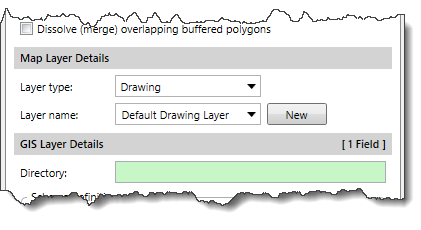
The following entries are provided in this section to define the type and name of the map layer:
This section gets enabled when the user selects a GIS layer type. Otherwise, the options in this section are not available.
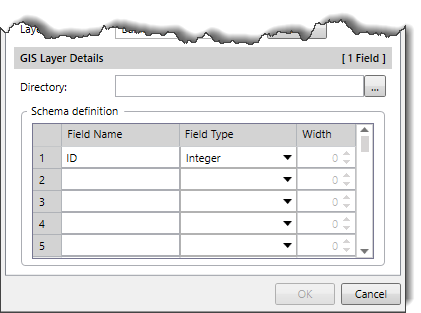
The Directory field defines the path and name of the shapefile to be created. The user can click the […] browse button to select the shapefile directory and file name.
The Schema definition data table allows the user to define the fields to include for the shapefile layer.
This data table requires the following data:
When all the data have been defined in the dialog box, the user can click the [OK] button and the software will create buffer polygons around the selected polylines.
 1-800-301-02-955
1-800-301-02-955
 608-729-5100
608-729-5100
(US and Canada)
 [email protected]
[email protected]
 +1 608-729-5100
+1 608-729-5100
CivilGEO India
Graphix Tower, A-13 A
3rd Floor, Sector 62
Noida, Uttar Pradesh 201309
IndiaTel:
1-800-301-02-955 or
+91 022-3831-8601
CivilGEO United States
8383 Greenway Blvd
6th Floor
Middleton, WI 53562
USATel:
608-729-5100 or
800-488-4110
Copyright © CivilGEO, Inc. All rights reserved. The CivilGEO logo, “GeoSTORM”, “GeoHECHMS”, “GeoHECRAS”, and “Ready To Engineer” are registered trademarks of CivilGEO,Inc.
All other brands, company names, product names or trademarks belong to their respective holders.
We use cookies to give you the best online experience. By agreeing you accept the use of cookies in accordance with our cookie policy.
When you visit any web site, it may store or retrieve information on your browser, mostly in the form of cookies. Control your personal Cookie Services here.
The ZoomInfo WebSights snippet drops three cookies to track Unique Visits:
1. _pxhd - Related to the Perimeter X security layer (Perimeter X isused to prevent bot attacks).
2. _cfduid - Related to the CloudFlare security layer (CloudFlare is the Network Security protocol that ZoomInfo uses to orchestrate the rate limiting rules).
3. visitorId - This is how WebSights identifies recurring visitors








